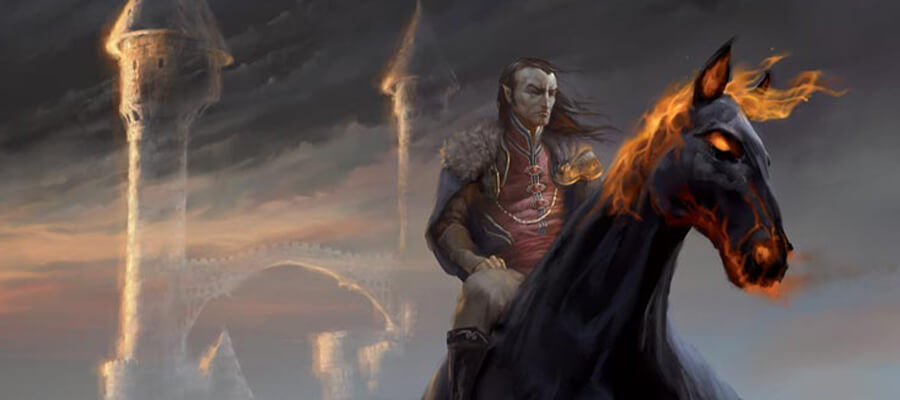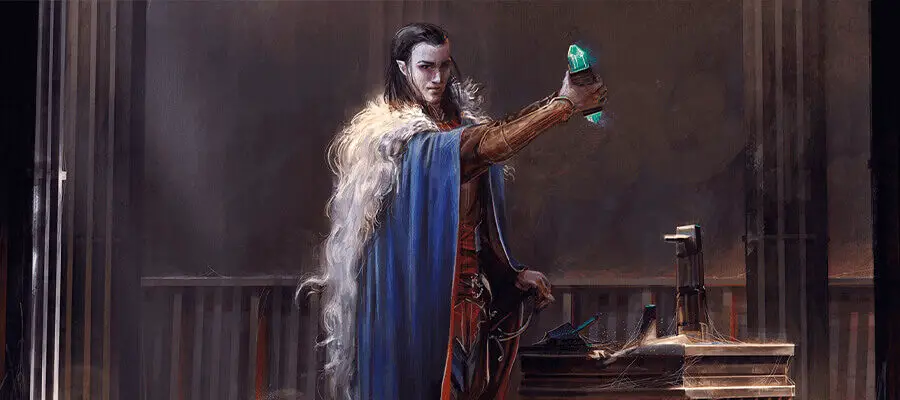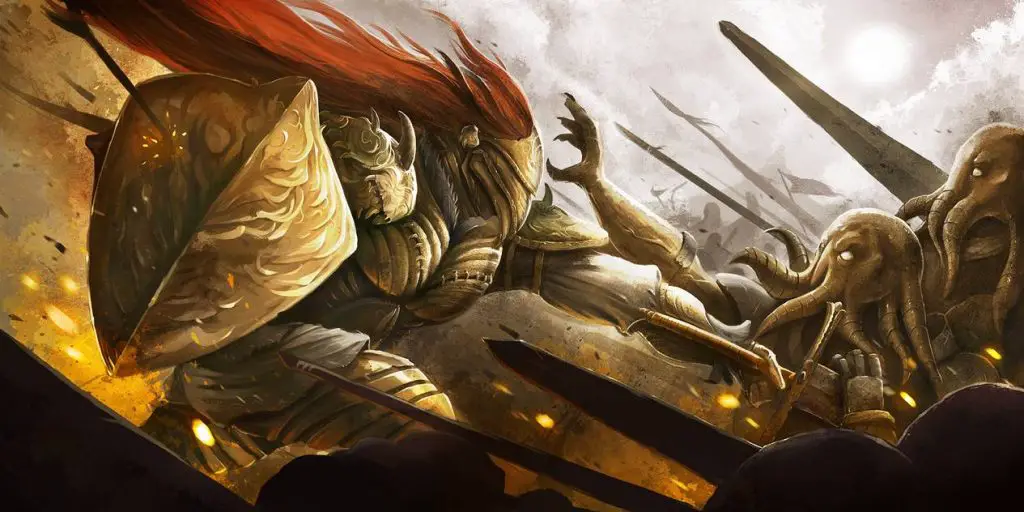This article about resonant villains features art of Strahd from Vecna: Eve of Ruin. This article contains affiliate links to put gold in our coffers.
Strahd von Zarovich is one of Dungeons & Dragons’ most memorable villains—and for good reason. Unlike most module antagonists, he remains front-and-center throughout the entire campaign, tormenting your players from their first full day in Barovia to the adventure’s explosive finale.
But it isn’t Strahd’s backstory, his statblock, or even his torturous encounters that make him so memorable. Instead, what makes Strahd stand out is his resonance—the way he makes your players feel.
A resonance is an emotion that a particular character makes your players feel out-of-character. A character can have one or more resonances, such as amusement, endearment, flattery, anger, or disgust. Positive resonances make a character more likeable, while negative resonances make a character more unlikeable.
Resonance matters because it allows us to establish internal, emotion-driven stakes as well as external, plot-driven ones. Just as players will be far more motivated to protect or support an NPC they love, so too will they be that much more driven to defeat an NPC they despise. These emotional stakes can provide personal investment to a campaign, turning any generic prophecy-driven fantasy narrative into an incredibly memorable experience.
Strahd’s Core Character Resonances
Given the sheer breadth of Curse of Strahd DM creativity, there are endless variations on Strahd’s personality. (Show me three DMs running Curse of Strahd, and I’ll show you four different interpretations of its titular villain.) But there are, in a general sense, several core resonances that nearly all interpretations—either consciously or not—try to evoke:
- Flattery. Strahd isn’t a villain from a Saturday-morning cartoon. He is cunning, suave, and deeply manipulative. He’s not afraid to use his honeyed words to make a particular player feel favored or special, especially where doing so might sway them to his advantage.
- Respect. Strahd puts the “lawful” in “lawful evil.” He demands and maintains order and looks down upon those who must deceive others to succeed. If Strahd makes the players a promise, they can bet on their lives (and often might have to) that he’s not about to break it.
- Disgust/Discomfort. Strahd is a true sociopath—someone who cares nothing for something as petty as human grief or suffering. His sheer apathy in the face of others’ pain is sure to inspire disgust in any Good-aligned player, and discomfort in any other potential foes.
- Anger. Strahd knows how to push the players’ buttons, and works to do so to his own benefit wherever possible. Whether that means goading a hot-tempered barbarian into breaking a fragile peace or inflicting targeted pain on the players’ closest friends, Strahd is hateable because his evil is personal, much unlike the distant villainy of Tiamat or Acererak.

Complex Character Resonance of Strahd
Significantly, Strahd provides a complex resonance, providing some positive resonances (flattery, respect) as well as clear negative ones (disgust, discomfort, anger). This mix of positive and negative emotions is an important driver of the players’ unsteady relationship with him, ensuring that—at least until the endgame approaches—they’re never quite sure which footing they’re on. This complexity creates tension, letting players know that one misstep might be all it takes to trade the Gentleman for the Beast.
For a more complete review of Strahd’s complex personas—plus full NPC profiles for every major character in Curse of Strahd—check out the corresponding chapters in my guide to running Curse of Strahd, Curse of Strahd: Reloaded. To create similar resonance profiles to NPCs in your own campaigns, however, follow these basic steps:
- First, decide what purpose this NPC plays in your campaign. Are they a villain? An ally? An obstacle? A questgiver?
- Second, decide whether you prefer for your players to like or dislike this NPC. In the case of a major or recurring NPC, consider giving that NPC a more complex resonance profile, thereby giving your players the opportunity to develop a richer relationship with this character.
- Third, choose your resonances. What emotions—positive and/or negative—do you want this NPC to make your players feel OOC?
- Fourth, decide how this character will inspire those resonances in actual gameplay. Will they inspire comfort by providing reassurances and unconditional support? Will they inspire amusement with a silly voice or bad puns? Or will they inspire irritation with their stubbornness and condescension?
You Can Make Villains Resonate
Creating resonance takes more work, it’s true. But by tying the stakes of your campaign to resonant NPCs, you’ll be able to create a much more memorable and personally meaningful experience for you and your players. So go forth and explore the emotions you can create in your players—it’ll be sure to bring your campaign alive.
About the Author: DragnaCarta is a guest writer for FlutesLoot.com and a veteran DM with 12+ years of experience. He is the author of the popular “Curse of Strahd: Reloaded” campaign guide and the Dungeon Master and director for the Curse of Strahd livestream “Twice Bitten.” You can get his personal RPG mentoring plus early access to projects by joining his Patreon.




